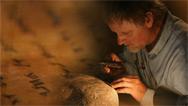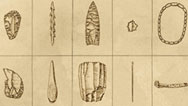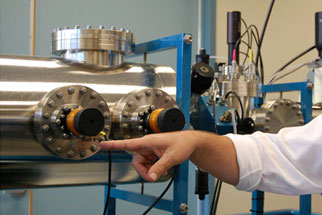Radiocarbon Dating
- By David Levin
- Posted 11.18.08
- NOVA
Archeologists use various methods to date objects. Inscriptions, distinctive markings, and historical documents can all offer clues to an artifact's age. And if the artifact is organic—like wood or bone—researchers can turn to a method called radiocarbon dating. In this interactive, learn how radiocarbon dating works, what it takes to determine a date in the lab, and why it's challenging to pinpoint a date precisely.
Credits
Photos
- ("In the Lab" photographs)
- © Rachel VanCott/WGBH Educational Foundation
- ("In the Lab" diagrams)
- Courtesy Woods Hole Oceanographic Institution
- (Bill Jenkins)
- Courtesy Bill Jenkins
Related Links
-

The Bible's Buried Secrets
An archeological detective story traces the origins of the Hebrew Bible.
-

T. Rex
An astonishing adolescent growth spurt accounts for T. rex's enormous size.
-

Stone Age Toolkit
Would you know how to use an ancient stone tool if you unearthed one? Try your hand here.
-

Becoming a Fossil
This video describes how the Australopithecus afarensis skeleton known as Lucy could have been fossilized.
You need the Flash Player plug-in to view this content.


